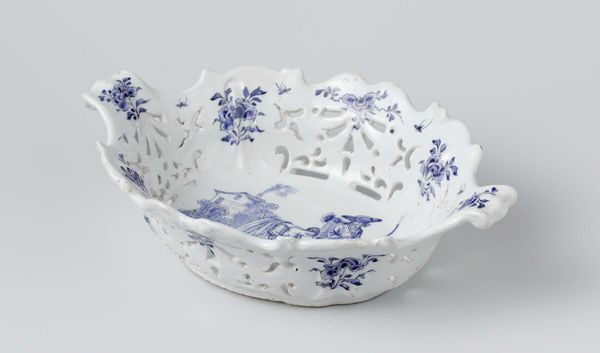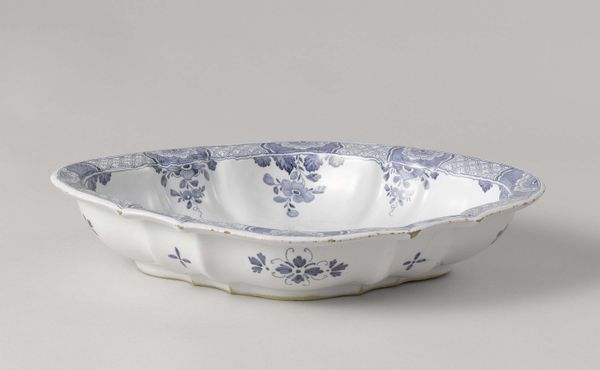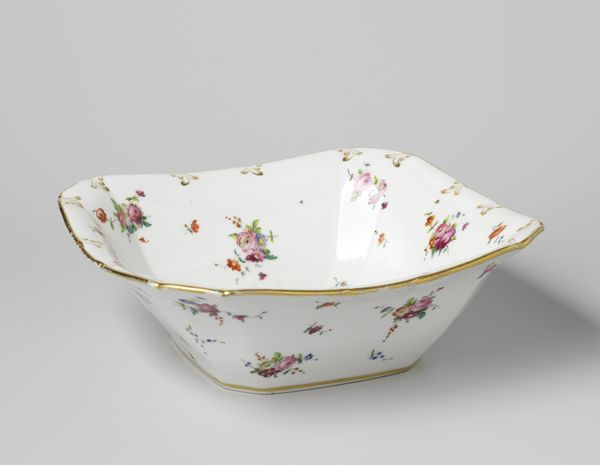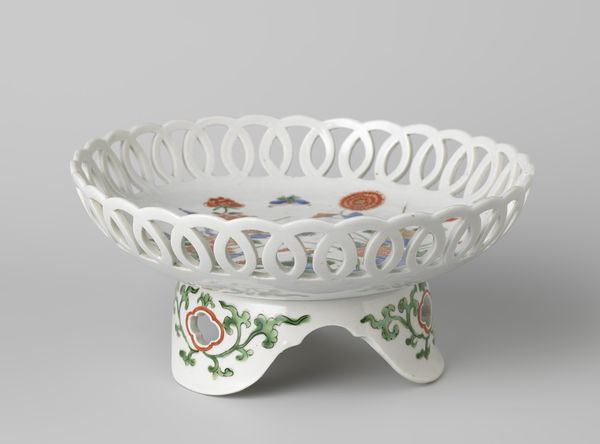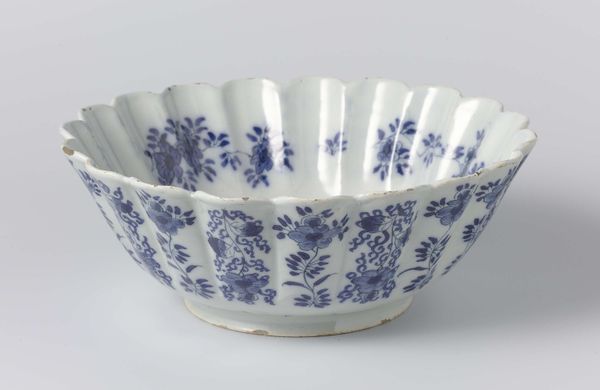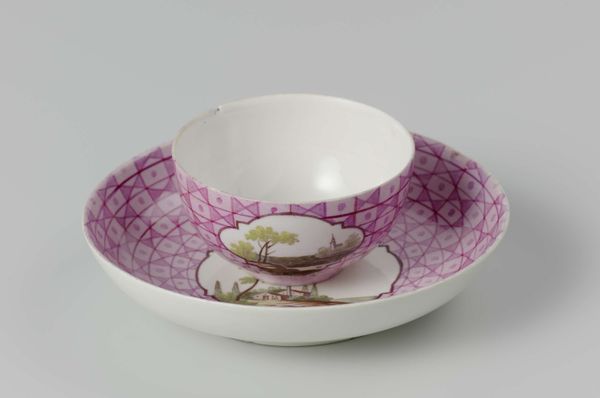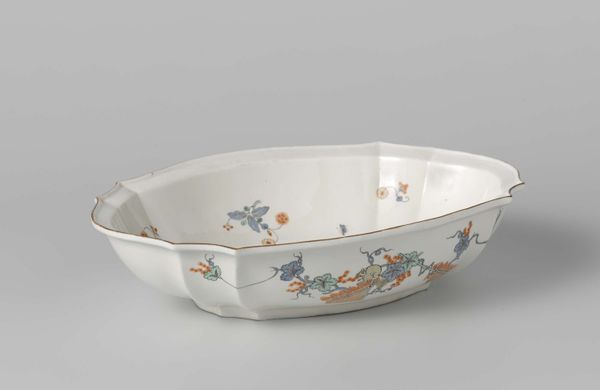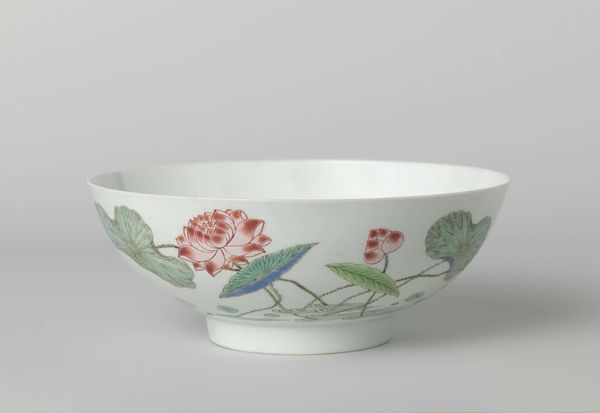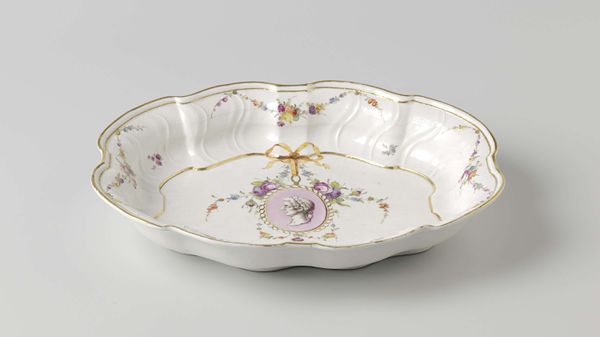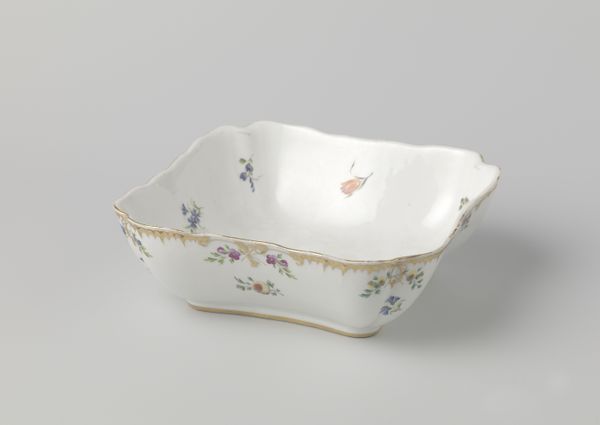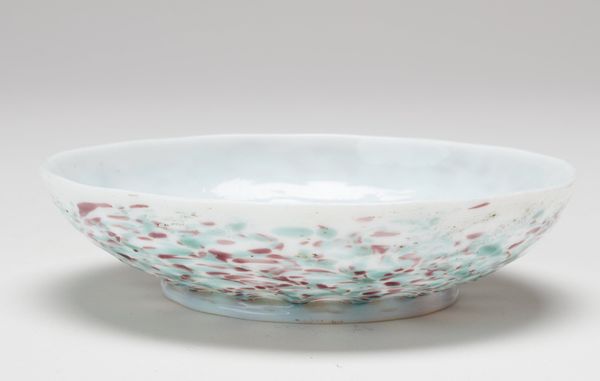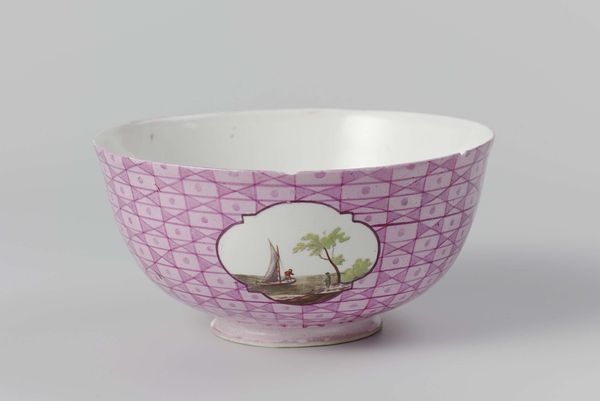
Suacer-dish with fluted sides and insects, peony and prunus sprays c. 1720 - 1740
0:00
0:00
ceramic, porcelain
#
asian-art
#
ceramic
#
porcelain
#
ceramic
#
decorative-art
Dimensions: height 5.5 cm, diameter 20.7 cm, diameter 12.7 cm
Copyright: Rijks Museum: Open Domain
Editor: Here we have a porcelain saucer dish, likely from the first half of the 18th century. I'm drawn to the delicate fluted sides and the painted imagery of insects, peony, and prunus sprays. The piece feels refined, almost like a celebration of the natural world. As an art historian, how would you interpret its cultural and historical significance? Curator: It’s interesting you mention refinement, as that speaks volumes about the porcelain's place within global trade networks and systems of taste at the time. Dishes like this were produced in China, but often specifically for export to Europe, catering to European aesthetic preferences for Chinoiserie. Editor: Oh, so it’s not purely Chinese in its cultural origins, then? Curator: Precisely. The presence of peony and prunus—traditional symbols of wealth and spring, respectively, in Chinese culture—are recontextualized as exotic commodities consumed by the European elite. Its presence in collections reflected both access to global trade and aspiration to a cultivated taste. Think of the status associated with tea consumption at that time – a ritual also dependent on global exchange networks, and the display of such porcelains during these ceremonies. It served a social purpose as well as an aesthetic one. Do you see the link? Editor: I do. The saucer-dish becomes less about Chinese artistry itself, and more about how that artistry was used within European power structures to reinforce ideas of status and exoticism. Curator: Exactly! The seemingly innocent decoration is intertwined with a whole history of colonial trade and cultural appropriation. It makes you wonder what other 'innocent' objects have these complex narratives woven into their creation and consumption. Editor: That’s fascinating, looking at it through that lens completely shifts my perception of the artwork! It is far more than just a beautiful piece of porcelain. Curator: It really does demonstrate how objects can act as silent witnesses to global power dynamics.
Comments
No comments
Be the first to comment and join the conversation on the ultimate creative platform.
